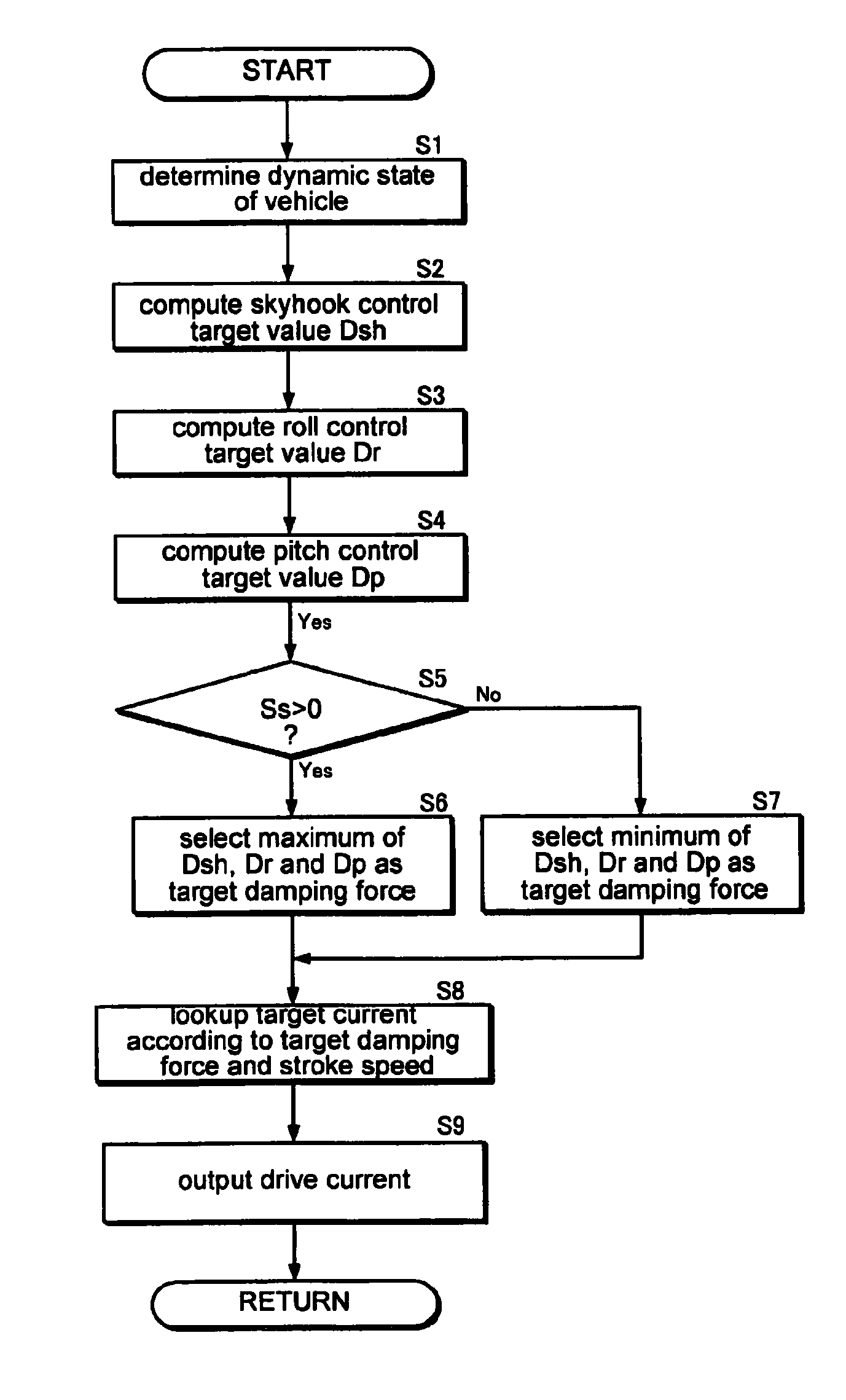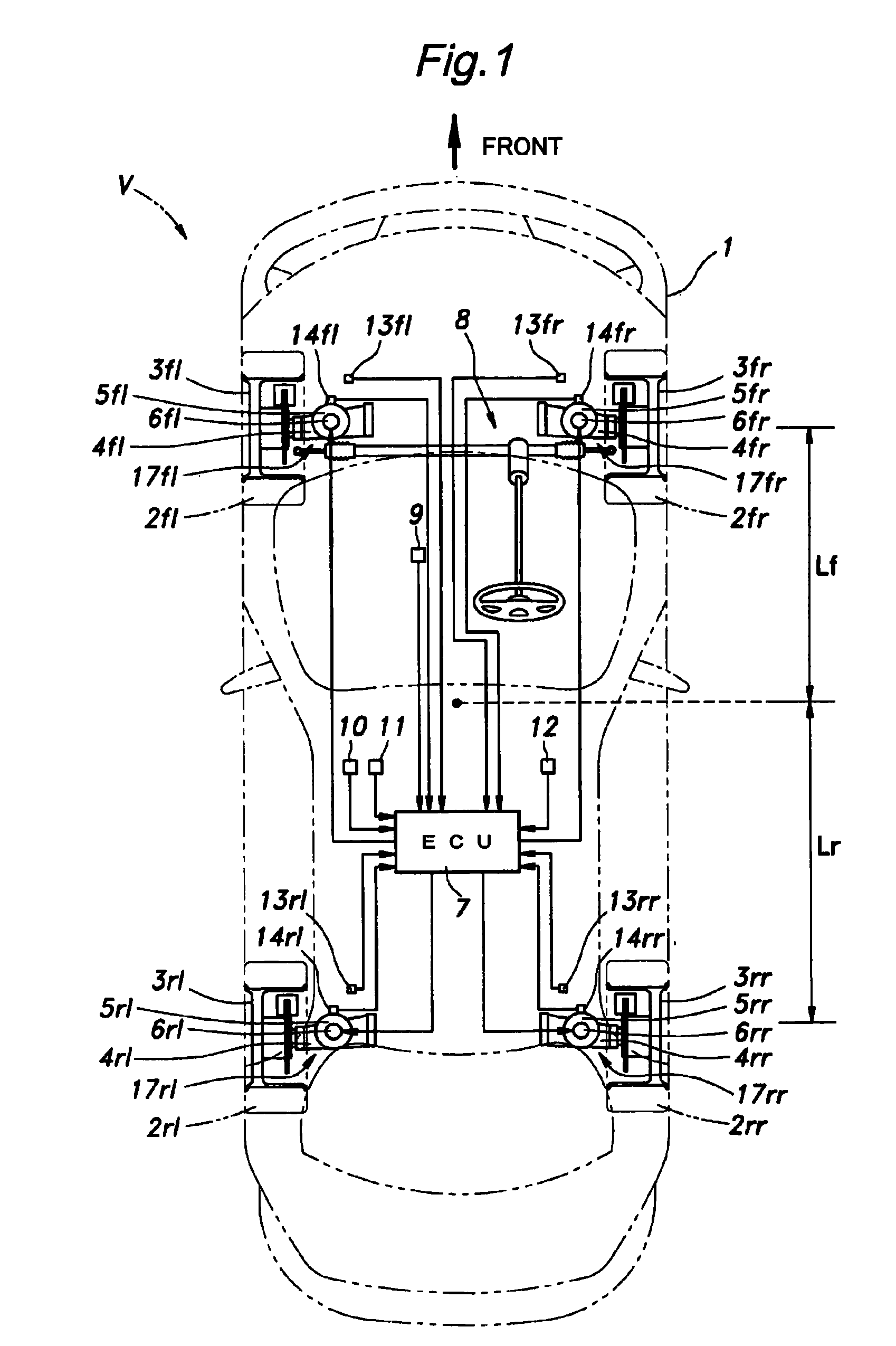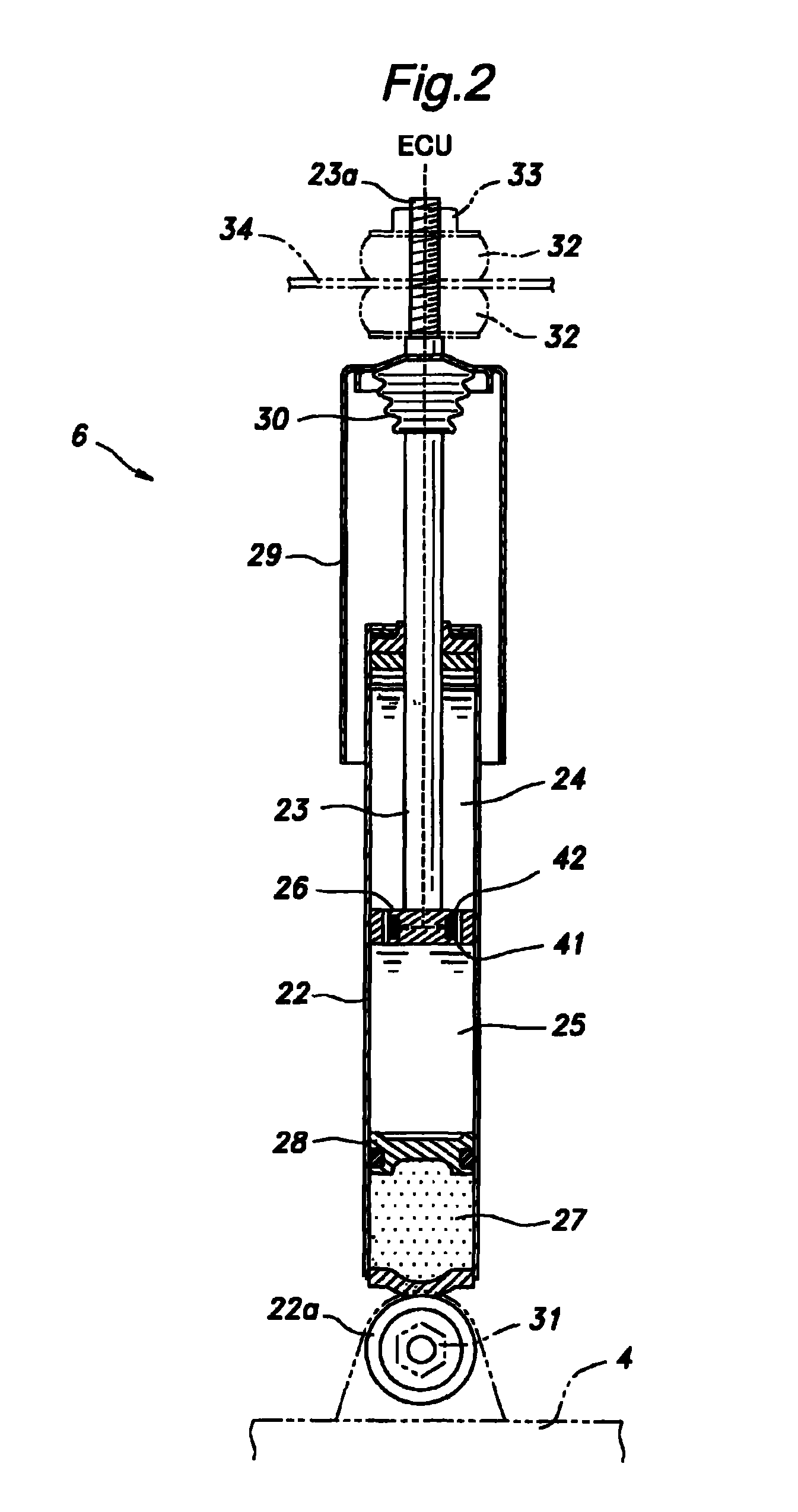Control device for a wheel suspension system
a technology of control device and suspension system, which is applied in the direction of cycle equipment, instruments, transportation and packaging, etc., can solve the problems of unfavorable control of vehicle behavior such as vertical movement, rolling movement, pitching movement, etc., and achieve the effect of preventing the undesired response of the vehicle body
- Summary
- Abstract
- Description
- Claims
- Application Information
AI Technical Summary
Benefits of technology
Problems solved by technology
Method used
Image
Examples
third embodiment
FIGS. 11 to 13 show the present invention. The parts corresponding to those of the previous embodiments are denoted with like numerals without repeating the description of such parts.
As is typically the case, the wheel suspension systems of the illustrated embodiment are configured such that the natural frequencies Fn of the wheel suspension systems of the different wheels are identical to one another when the vehicle V is traveling over a horizontal road surface as shown in FIG. 17. FIG. 17, and FIGS. 18 and 19 which are to be discussed hereinafter, show the relationship between an amplitude ratio of the amplitude of a sprung mass movement to the amplitude of road surface irregularities and the frequency. The amplitude ratio is given in a logarithmic scale (20*log10x). Therefore, the smaller the value of the amplitude ratio is, the smaller is the amplitude of the sprung mass movement for a given input of road surface irregularities.
Referring to FIG. 11, the damping force control un...
eighth embodiment
An eighth embodiment which is slightly modified from the second embodiment and seventh embodiment is described in the following with reference to FIGS. 42 and 47. Again, the parts corresponding to those of the previous embodiment are denoted with like numerals without repeating the description of such parts.
Referring to FIG. 47 illustrating the damping force control unit of the eighth embodiment, the ECU 7 is incorporated with a suspension property control unit 150 for controlling each of the dampers 6. The suspension property control unit 150 comprises an input interface 51 to which the sensors 9 to 14 are connected, a damping force setting unit 52 for determining the target damping force of each damper 6 according to the detection signals obtained from the sensors 9 to 14, a spring constant control unit 101 for setting a spring constant control value Dsu of each sir spring according to the detection signals obtained from the sensors 9 to 14, a spring drive current generating unit ...
PUM
 Login to View More
Login to View More Abstract
Description
Claims
Application Information
 Login to View More
Login to View More - R&D
- Intellectual Property
- Life Sciences
- Materials
- Tech Scout
- Unparalleled Data Quality
- Higher Quality Content
- 60% Fewer Hallucinations
Browse by: Latest US Patents, China's latest patents, Technical Efficacy Thesaurus, Application Domain, Technology Topic, Popular Technical Reports.
© 2025 PatSnap. All rights reserved.Legal|Privacy policy|Modern Slavery Act Transparency Statement|Sitemap|About US| Contact US: help@patsnap.com



